 Ben, Colin, & Steph on Bike to Work Day.
Ben, Colin, & Steph on Bike to Work Day. River view along the Mississippi River Regional Trail.
River view along the Mississippi River Regional Trail.“There is no trail maintenance during the winter, including plowing and clearing. Please follow the posted detour routes. Thank you for your patience during this process.”
 Map of the closed trail section. Note the detour (yellow) takes riders across the river–opposite the side Dero is located.
Map of the closed trail section. Note the detour (yellow) takes riders across the river–opposite the side Dero is located.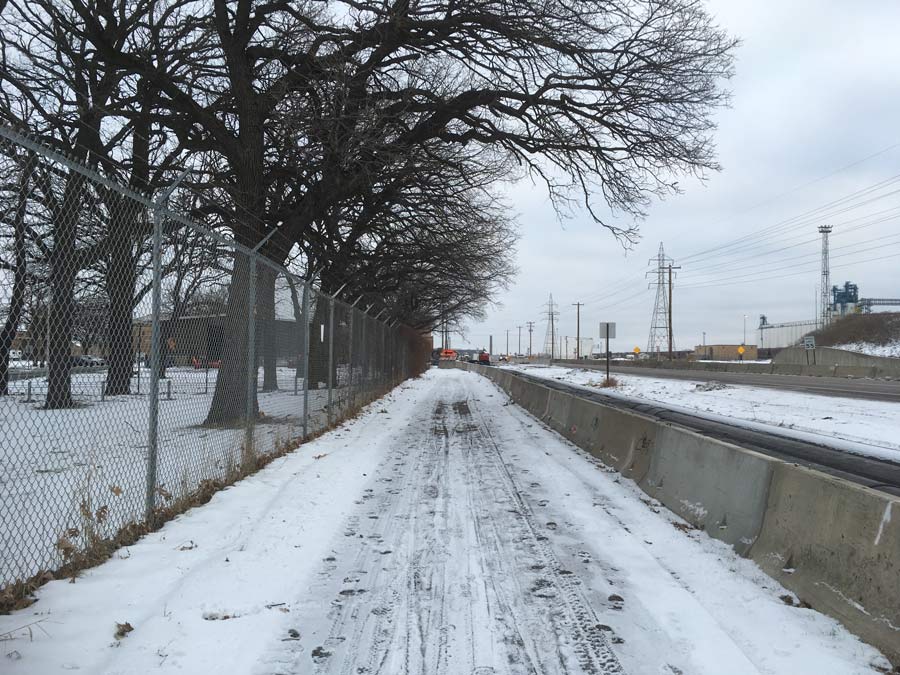 View of the plowed trail.
View of the plowed trail. A plowed trail means Bri is happy. Thumbs up!
A plowed trail means Bri is happy. Thumbs up!
Dero ZAP Snapshot: University of Colorado Colorado Springs
Not familiar with ZAP? Watch this short video and continue reading below!

Tony: Why did you choose ZAP?
Kimberly: Dero ZAP was the only all-in-one program we could find. Their RFID tags allowed for easy participation that helped move our bike incentive program away from self-reporting. And the online dashboard provides easy access to information for both participants and program managers.What is your favorite part of using ZAP?
My favorite part of using Dero ZAP are the affirming stories from participants. Our front runner is a facilities staff person, and he’ll be the first to tell you how far ahead of the second place rider he is. There’s also a chemistry professor who can’t get enough of the ‘chirp’ every time he gets to campus. He says it’s like a little cheer that he biked another day; he rides for the health benefits.What was your experience implementing the program and getting people to participate?
Thanks to our Facilities Services staff, we were fortunate enough to get our first (of five) stations installed before our annual Bike Jam/Bike to Campus Day. At that one event, we were able to sign-up 60 participants. Since then, we’ve held more, smaller bike events and are currently at 85 participants. I think our riders appreciate the elimination of self-reporting data. We’re hoping this upcoming year, since we have all five stations installed as of March 2017, we’ll have more participation.What have your results been since implementing the program?
That original station is by-far the most frequented, but the data has shown two other entrances on campus that personally, I don’t see on a daily basis and wouldn’t have expected that much traffic. These stats will help advocate for bike infrastructure in these priority areas.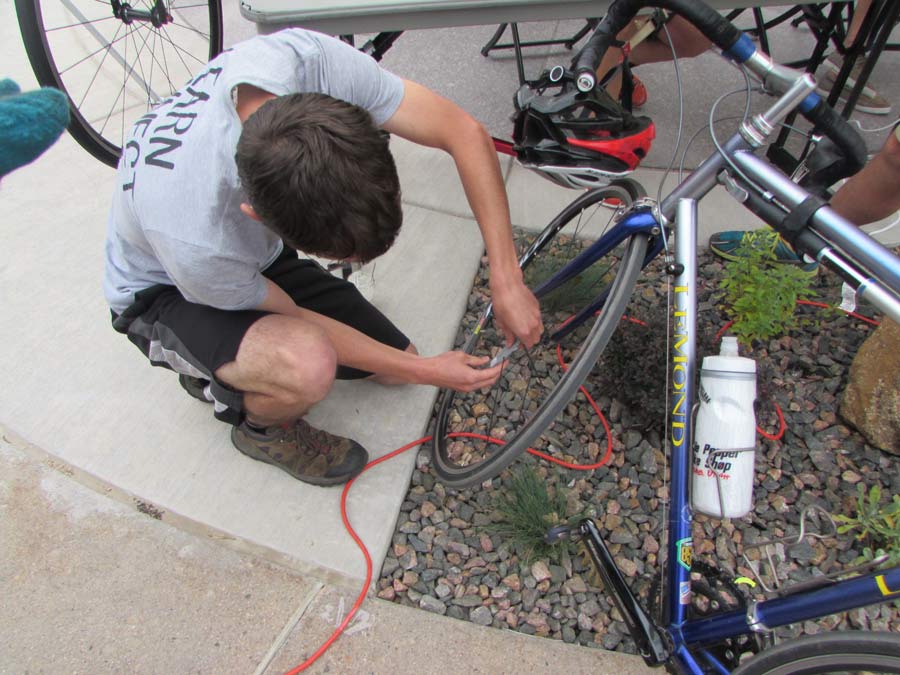
What is your favorite program feature?
My favorite program feature is the ease of randomly handing-out prizes. I’m able to give a concrete goal for the month, and the dashboard provides the ability to sort, draw a winner and automatically alert them with an email. This feature also helps us keep a more accurate inventory of prizes.Why is it important to promote wellness at your organization?
With the location of our campus on a bluff and 15-30 minutes from amazing hiking trails (not to mention the trails on campus,) promoting wellness seems to be a way of life at UCCS. Active living not only keeps us healthy, but also hopefully provides ways in which we can deal with life’s stresses in a positive way.And how does ZAP contribute to promoting wellness?
Dero ZAP has been a forum for talking about why colleagues bike to campus. These conversations sometimes involve saving money on parking or reducing their use of single-occupancy vehicles, but no matter the reason, health is usually a main factor.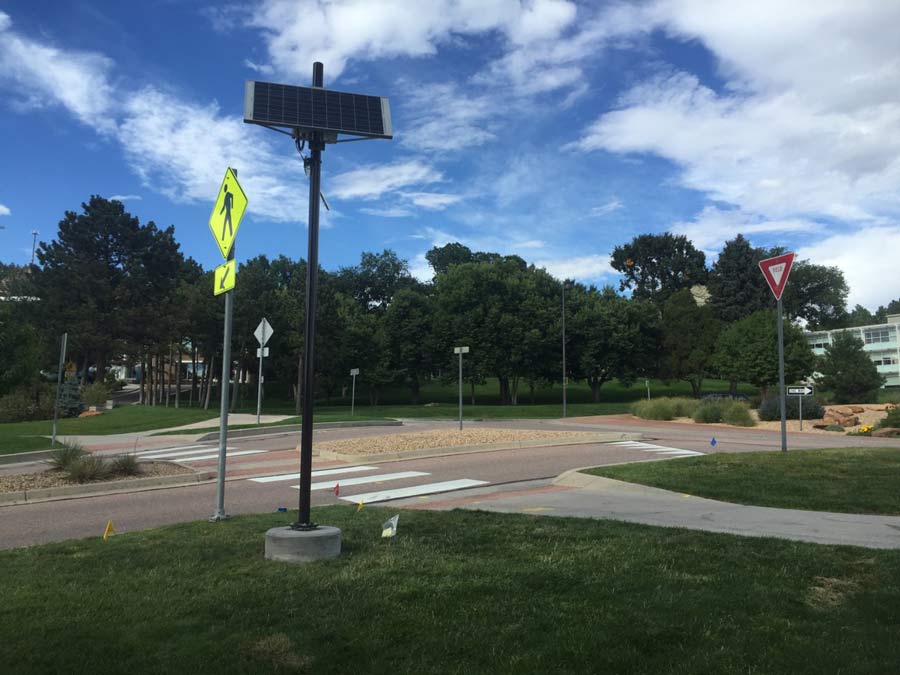
Campus Bike Parking: An Introductory Course
A+ Bike Parking
First and foremost, quality bike parking on any campus means more than just something to lock to (that would barely qualify as a passing grade). Good bike racks and bicycle storage should be u-lock compatible, protect students’ bikes from the elements, and be numerous enough to meet demand. Everyone hates searching for a spot to park when you’re already late for class!
Bike shelters are a great example of quality bicycle storage that protects students’ bikes from bad weather. In the above photo, a student at St. Olaf College in Northfield, MN checks out a bike from the campus bike share program. The Kolo Shelter is a perfect solution for fitting two-tiered systems, like the Dero Decker, to double up on bike parking capacity.
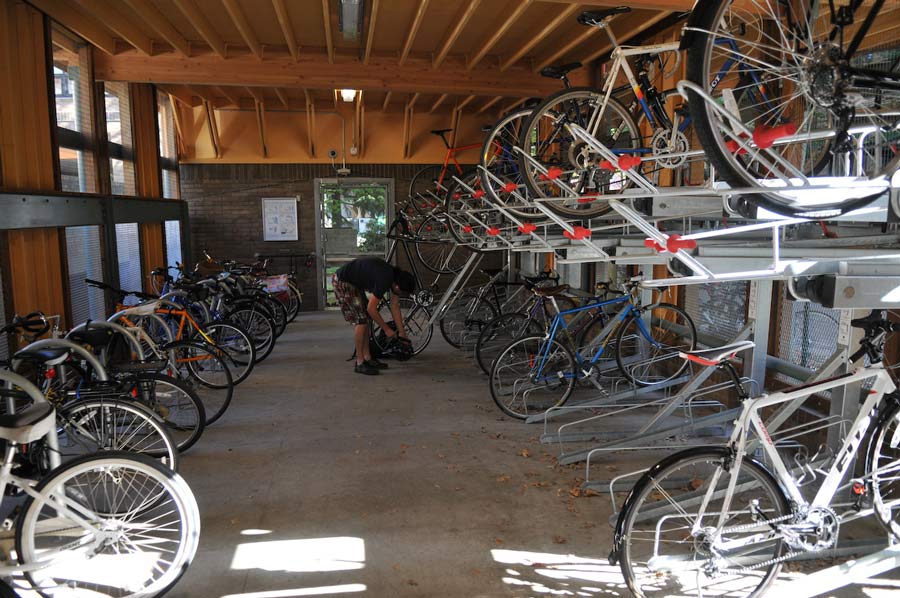 A bike room at Portland State University.
A bike room at Portland State University.It should be no surprise that bike rooms receive an “A” grade in our book. Fully enclosed, secure parking, like in Portland State University’s Bike Garage, includes both two-tier and floor-mounted parking options, which accommodates many different types of bikes. Many bike rooms are furnished with public bike repair amenities, such as the Fixit repair stand and Air Kit bike pumps.
Keep Students Rolling
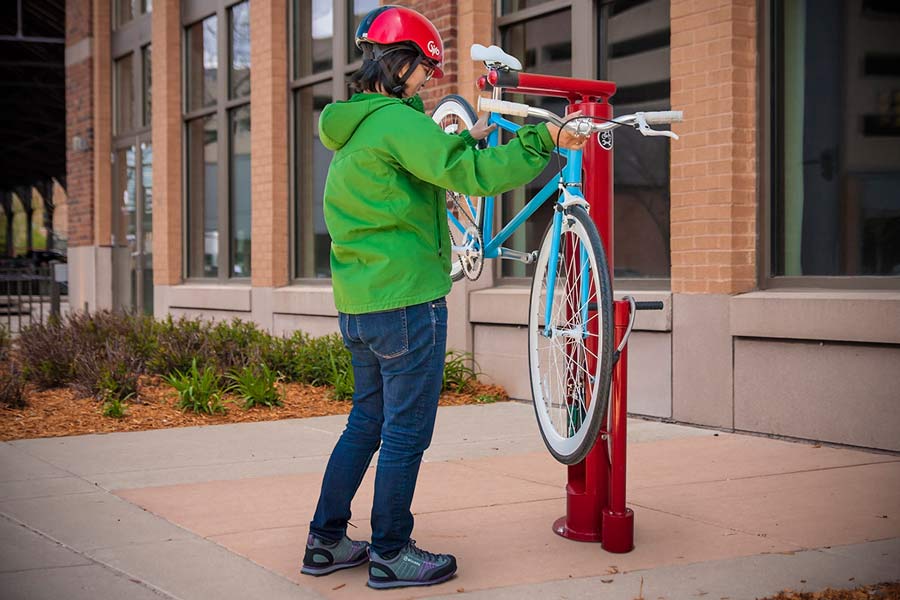 The Dero Fixit public bike repair stand.
The Dero Fixit public bike repair stand.Bike repair stands don’t only belong in bike rooms. They’re perfect for busy bike paths, in or outside student residence halls, and in central public spaces on campus. The Dero Fixit provides all the necessary tools so students can perform basic bike maintenance. Add either an Air Kit 2 or Air Kit 3, and students have the ability to repair flats or top off the air in their tires.
Public bicycle repair stands are also great educational opportunities. Many campuses teach fix-a-flat or tune-up classes at the stands, so students can learn how to use all of the tools available to them. Here are a few videos that colleges and universities made to highlight their campus bike repair:
University of Iowa, UT Arlington, Tufts University, Penn State, University of Oregon.Encourage Active Transportation
College campuses have high numbers of active people in a concentrated area. Dero ZAP is our automated commuter tracking program and is used to incentivize and gather data on students’ commutes at campuses across the country.
At the University of Minnesota, Dero ZAP has been used to track both faculty and students’ commutes since 2012. Steve Sanders, Alternative Transportation Manager at the U, says that “Since the program’s inception in 2012 we’ve seen increased bicycle mode share and a deepened cycling culture. We’ve also been extremely pleased by how many women are actively participating – over 40% of participants are women.”
For more information on Dero ZAP, watch our “How it works” video.
Cultivate Campus Identity
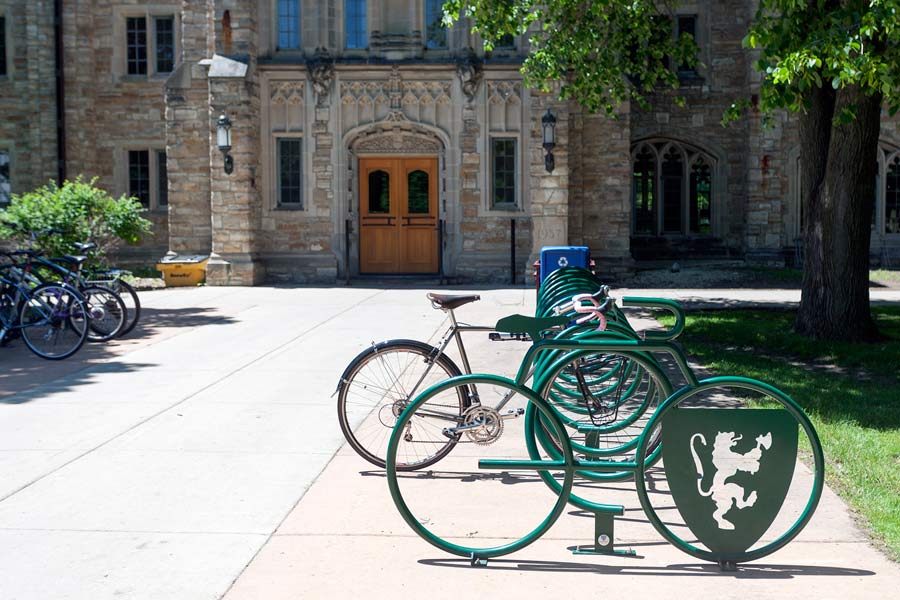 St. Olaf Collage chose to highlight their logo in this custom laser-cut Bike Bike Rack.
St. Olaf Collage chose to highlight their logo in this custom laser-cut Bike Bike Rack.As more colleges and universities invest more resources into their biking infrastructure, custom racks are a great way for schools to stand out and add a personalized touch to their bike parking. At Dero, we’ve had years of experience making custom projects a reality. All we need is your school’s logo or mascot.
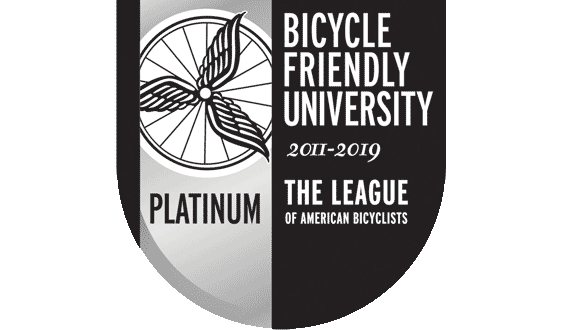
Feel confident you’ve mastered Campus Bike Parking 101? Time to take your biking game to the next level: consider applying for Bicycle Friendly University (BFU) status through the League of American Bicyclists. Dero has been a Gold certified Bike Friendly Business for over 4 years (you can read our story here), and we hope you “ace” your BFU application!
Every Day is Bike to Work Day

How long have you been biking to work?
- Colin, web/graphic designer: About 7 or 8 years.
- Natalia, sales coordinator: 10 years!
- Ben, marketing specialist: 7 years.
- Ted, sales representative: About 12 years.
- Andy, general manager, VP: 10 years
- Bri, marketing director: 17 years…holy moly!

What got you started?
- Colin: Bike to Work Day, actually!
- Natalia: It was quicker than walking and cheaper than the bus. These days I just plain enjoy it. On the few days when I drive, the stress from the drive always makes me wonder why I hadn’t ridden.
- Ben: Didn’t want to own/buy a car. When I got one, realized I’m a lot less stressed when I ride vs. drive.
- Ted: Somewhat necessity, I didn’t have a car during my internship in college and realized that cycling was a great way to get around. After that I began moving away from the mountain bikes toward more commuter based ones that allowed me to carry items with greater ease and swiftness.
- Andy: Starting work at Dero got me into bikes and on a path to spending all my income on bikes. The staff at Dero back in 2007 was surprised when I drove on my first day, so they took me under their wing and helped me get a few bikes and the essentials to start riding. That experience completely changed my life for the better. I got healthier, stronger, happier, motivated, and had a competitive outlet again.
- Bri: It was the easy choice in college. Affordable, door-to-door parking, and fast.

Favorite part of biking to work?
- Colin: Much more relaxing than driving.
- Natalia: Seeing all of the critters, being present and surrounded by nature and seasons as they change.
- Ben: Pounding out Strava Segments™
- Ted: I love feeling awake and energized when I roll in the door and it’s great that “how was your bike commute?” is such a common discussion here. There’s a lot of camaraderie when it comes to battling rough weather or cruel headwinds.
- Andy: The chance that I’ll get to low-five an oncoming fellow rider and wave to everyone I see on a bike. It really starts my day out on a positive note.
- Bri: Biking along the Mississippi and crossing the river as well. I’m so lucky that my commute is mostly car-free and so scenic!
Least favorite?
- Colin: Mixing with traffic.
- Natalia: The wind.
- Ben: Not getting the KOM on Strava Segments™
- Ted: Rush hour traffic through downtown is always a bit nerve-wracking but I hate driving downtown in rush hour WAY more than biking through it. Traffic can be unpredictable and generally no one is in a great mood when they’re barely moving.
- Andy: Not of fan of mega headwinds coming out of the north.
- Bri: Marshal Ave NE, since I have to bike without a bike lane with traffic on my left and parked cars on my right.

What’s one thing you’ve learned that you would share with someone who’s never tried riding to work?
- Colin: It’s not so hard and you can cover several miles pretty quickly on a bike.
- Natalia: Wool is warmer! Being comfortable commuting is all about what gear you choose and often many cost-effective merino wool items can be found at secondhand stores in the sweaters section. One person’s “out of style” is my winter mid-layer!
- Ben: Tailwinds are great ways to help get that extra speed to take your favorite Strava Segment™ KOMs.
- Ted: A lot of people say they don’t have time to bike to work, but I find that my times aren’t significantly higher than by taking a car. Any distance can sound daunting before you try it and some days those miles absolutely fly by. A well fitting bike can completely change your perspective on cycling for transport. Many who remember the heavy clunky bikes of their youth haven’t taken the time to visit their local bike shop and go on some free test rides of the latest models where an informed bike shop employee can adjust a new sleek bike to fit you and your cycling needs.
- Andy: Just do it! You’ll be happier, more productive and enjoy coming to work. That busy rush hour auto traffic is such a negative experience in the morning, might as well do it by bike and feel great about yourself.
- Bri: It doesn’t have to be everyday, just try it once a week to see if it makes sense for you.
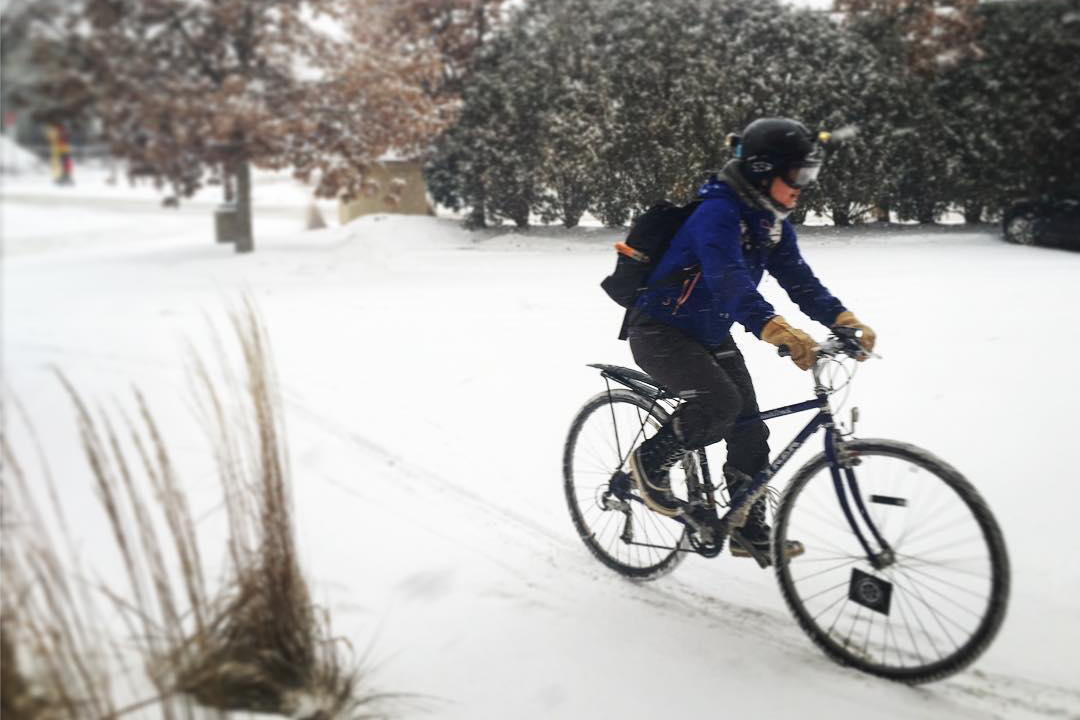
Anything else you want to share?
- Colin: Don’t worry about getting “all sweaty”. Mornings are pretty cool even in the summer and you don’t have to race in. Enjoy the ride.
- Natalia: This was my first year riding with a basket and it’s changed my life. I bungee my portable speaker into it and my lunch and I learn while I commute!
- Ted: Having a workplace that realistically encourages cycling as transport like Dero is a huge factor in my desire to work here. It’s really nice to have a workplace that, although hardworking and professional, appreciates that their employees can work hard in shorts, tennis shoes and helmet hair.
- Andy: RIDE YO BIKE…Always
- Bri: Bike commuting has improved my life exponentially. It’s my predominant physical activity and mood enhancer. It gets my blood moving and wakes me up for my workday and gives me time to decompress on my way home. It’s also fun!
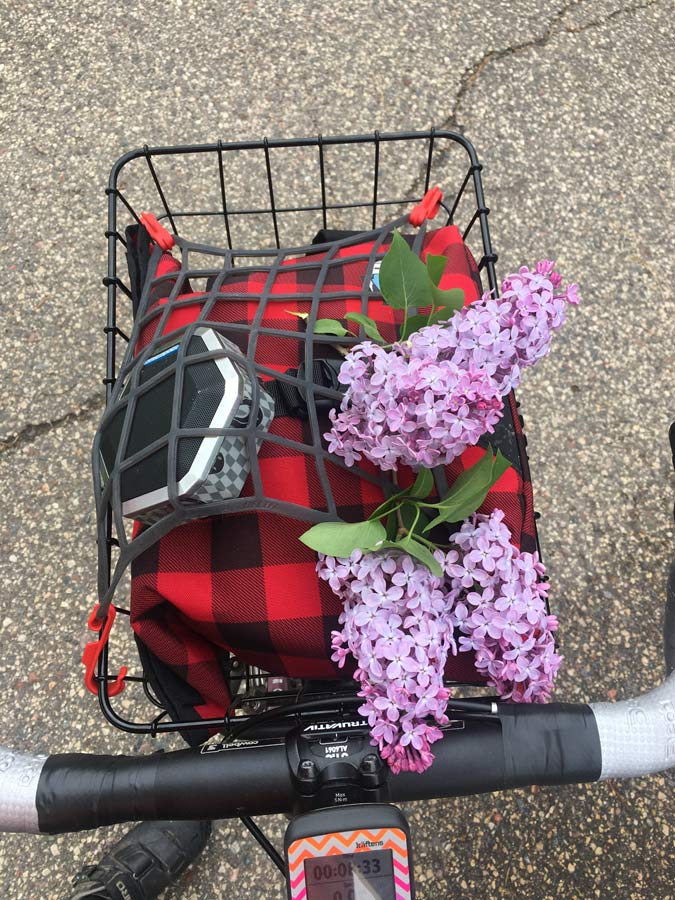
What Makes a Good Bike Rack?











